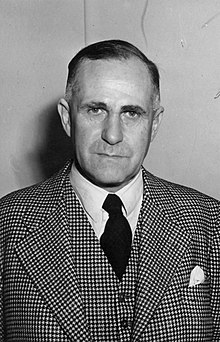Major General Sir Howard Kippenberger | |
|---|---|
 Portrait of Sir Howard Kippenberger in 1952 | |
| Nickname(s) | "Kip" |
| Born | 28 January 1897 Ladbrooks, New Zealand |
| Died | 5 May 1957 (aged 60) Wellington, New Zealand |
| Allegiance | New Zealand |
| Service | New Zealand Military Forces |
| Rank | Major General |
| Commands | 2nd New Zealand Division 5th Infantry Brigade 10th Infantry Brigade 20th Battalion |
| Battles / wars | |
| Awards | Knight Commander of the Order of the British Empire Companion of the Order of the Bath Distinguished Service Order & Bar Mentioned in Despatches Efficiency Decoration |
| Other work | Editor-in-Chief, War History Branch |
Major General Sir Howard Karl Kippenberger, KBE, CB, DSO & Bar, ED (28 January 1897 – 5 May 1957), known as "Kip", was an officer of the New Zealand Military Forces who served in the First and Second World Wars.
Born in the Canterbury region of New Zealand, Kippenberger joined the New Zealand Expeditionary Force (NZEF) in late 1915. He saw action in France on the Western Front, participating in the Battle of Flers-Courcelette. A serious wound in November 1916 saw him repatriated to New Zealand and discharged from the NZEF. He qualified as a solicitor in 1920 and worked in a legal practice in Rangiora. In 1924, he joined the Territorial Force and by 1936 had advanced in rank to lieutenant colonel.
Following the outbreak of the Second World War, Kippenberger was appointed to command the 20th Battalion. He led the battalion for two years, through the Battles of Greece and Crete as well as part of the North African Campaign before being promoted to brigadier and taking command of the 5th Infantry Brigade. The pinnacle of his military career was as commander of the 2nd New Zealand Division during the Italian Campaign. He was wounded on 3 March 1944 during the Battle of Monte Cassino when he stepped on a land mine. As a result of his wounds, he lost both of his feet. After recovery in England, during which he was fitted with artificial limbs, he helped prepare for and assisted in the repatriation of newly released New Zealand prisoners of war. In 1946, he was appointed Editor-in-Chief of New Zealand's largest-ever publishing project, the Official History of New Zealand in the Second World War 1939–45. He was still working on the project when he died on 5 May 1957 in Wellington.